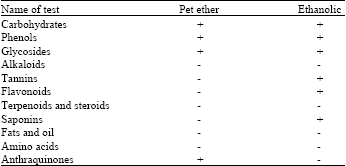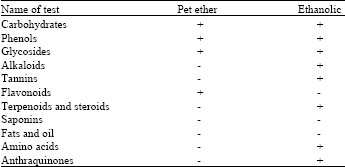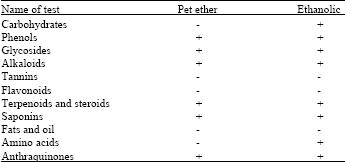Research Article
Phytochemical Comparison Between Pet Ether and Ethanolic Extracts of Bacopa monnieri, Evolvulus alsinoides and Tinospora cordifolia
Department of Pharmacy, CMJ University, Shillong, Meghalaya, India
Hem Raj
Department of Pharmacy, CMJ University, Shillong, Meghalaya, India
Bhartendu Sharma
LRIP, Solan (HP), India
Neeraj Upmanyu
RKDF College of Pharmacy, Bhopal, (MP)-462047, India











